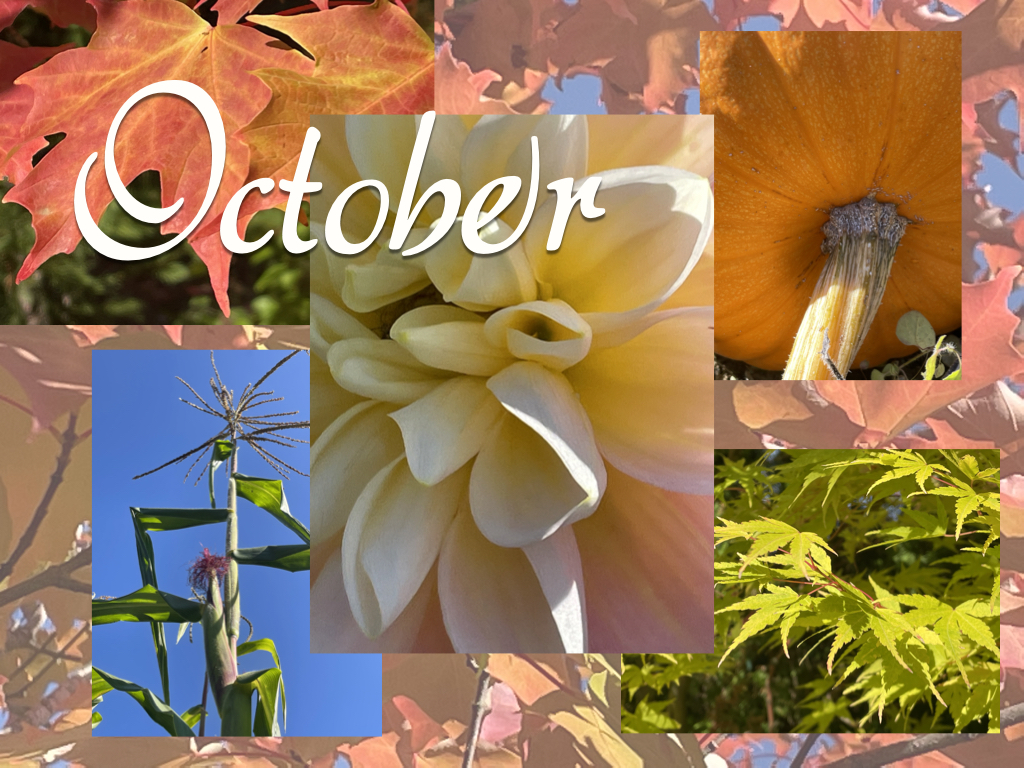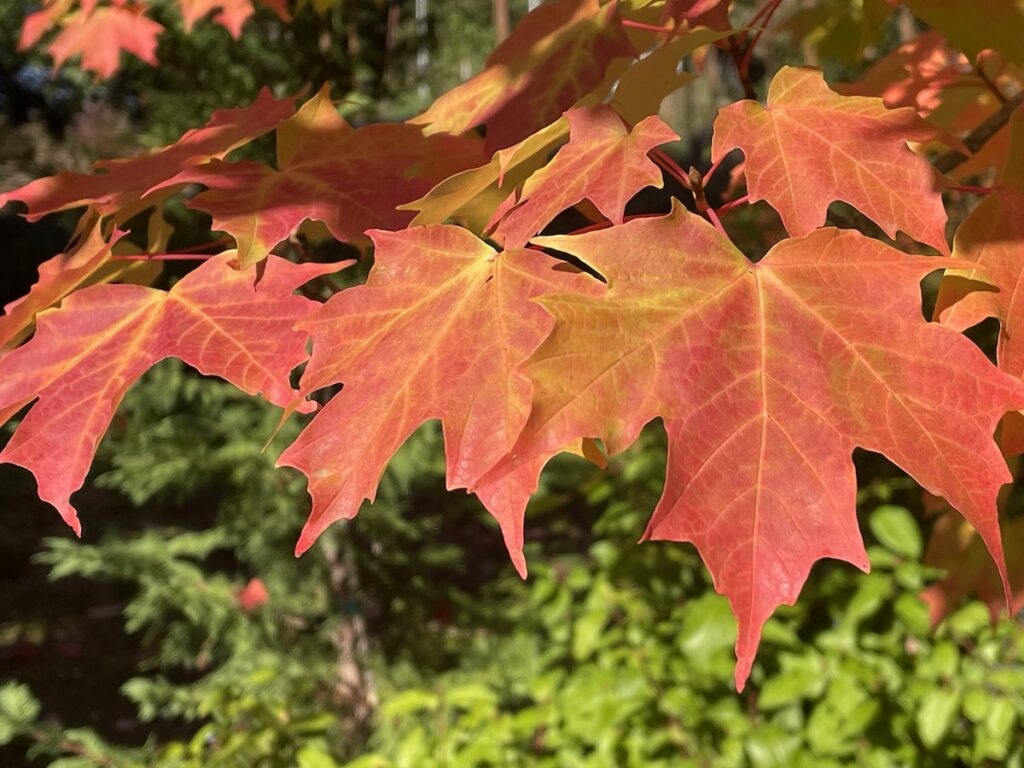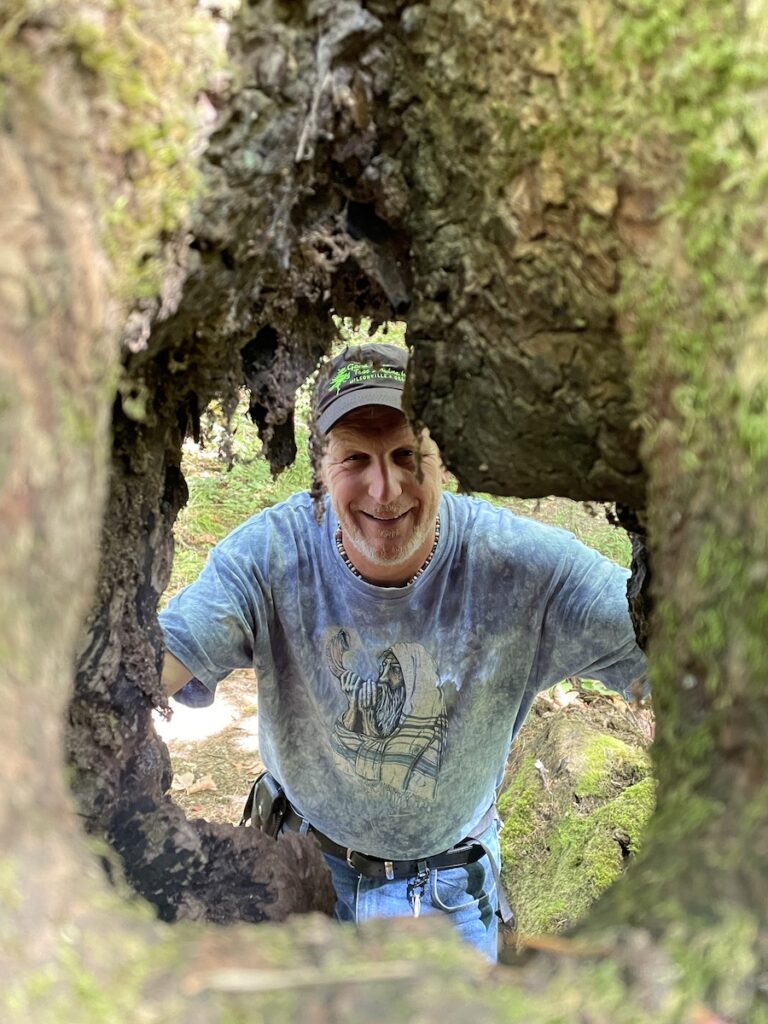
This guide is tailored for the western valleys of Oregon and Washington.
YOU can help to make the world a better, a more friendly, loving and beautiful place by being a good steward of the spot on this earth that you are privileged to be borrowing for a time—your garden. Nathan, the Treevangelist, urges you to treat your spot on this planet like your own personal Garden of Eden paradise. Then notice the joy that it will bring to you! This is your divinely mandated responsibility. Your trees, shrubs, flowers and the wildlife in your yard will express their smiling appreciation back to you and to others as they radiate love, joy and beauty bursting forth with vibrant and verdant life. Below is a to do list to help you to do just that.
The big, big news—the good news!—is that the rains have returned! As everyone knows, the western Pacific Northwest region is famous (in infamous!) for its regular (sometimes seemingly perpetual) rainfall over much of the year. Rain keeps the regional garden known as Oregon and Washington green and makes it renown for its verdant forests and lush greenery. Those of us who are native Northwesterners have even evolved webbed toes to cope with all of the rain! Moreover, we have developed specific linguist capabilities to express what in other areas of the world is simply known as rain. We refer to the various gradients and degrees of rain by terms such as showers, drizzle, mist, sprinkles, downpours, precipitation, cloud bursts or squalls to name a few. But 2021 has been anything but any of these as we, perhaps, find ourselves in the worst rain deficit in recorded history. Adding to the severity of the situation, this year summer started a whole month early. On top of it all, for several days in early June, we experienced record searing temperatures in the 115˚ to 120˚ range. Believe it or not, these are hotter temperatures, for example, than some areas get in the U.S. Southwest. However, with the return of the rains in September—a true blessing from Heaven—we can hopefully put these memories behind us for awhile as the land with its plant life takes a deeply needed swig of water. Hopefully this rain will assuage the dessication that has been killing many of our drought stricken trees, as well as impede future forest fires. Let us all offer up a prayer of thanksgiving to our Heavenly Creator (Elohim) who has graciously bestowed upon us the blessing of rain his rain!
Readers’ suggestions on how to improve this list are gladly solicited. If you, the reader, have any suggestions for additions to this month’s list, please put them in the comments section of this article, and I will add them to the list. Thank you in advance! — Nathan
Tree and Shrub Care

- Fruit trees: This is an excellent time to prune trees that are done fruiting, since wounds will heal more quickly in warmer weather than occurs in winter. This is also a good time to reduce the height of overgrown fruit trees, since they are likely to produce fewer water sprouts now then when pruned in the spring.
- Large trees: After each major weather event, check your trees for damage such as broken or hanging limbs. If you have concerns or questions about your trees, have an ISA Certified Arborist with an ISA Tree Risk Assessment Qualification (like Good News Tree Service, Inc.) inspect your large trees for damage or the potential of failure due to weak root systems and defects in trunks and branches.
- Mulch: Apply two to three inches of mulch around all trees and ornamental shrubs. This helps to fertilize the plants and feed the soil, and also protects them against weed growth and loss of water when the warmer weather returns, and helps to insulate the roots against cold weather in the winter.
- Pines—pruning: During the cooler fall, winter and spring seasons is the best time to prune pine trees. For those into Japanese style pruning, this is the time to bud prune.
- Pruning of trees and shrubs: You can do all aesthetic pruning of all ornamental shrubs and trees (except pines) at any time of the year in most cases.
- Pruning of large trees: Most trees in the temperate western valleys of Oregon and Washington can be pruned anytime of the year. If you’re not sure what to do, or how to do it, call Good News Tree Service, Inc. for a consultation, pruning lessons or to have us do the pruning for you. It is likely best to wait for cooler weather to prune stressed or sick looking trees or to do major pruning on trees. Call us if you have questions about this. Heavy pruning of some trees in the summer, especially conifers, can weaken or even kill them.
- Tree and shrub removal and stump grinding can be done all year long.
- Trees—Storm Issues: With the advent of winter storms and the potential damage that they may inflict upon your trees, have an ISA Certified Arborist with an ISA Tree Risk Assessment Qualification (like Good News Tree Service, Inc.) inspect your large trees for the potential of failure due to weak root systems and defects in trunks and branches. This can be done anytime of the year, but now, before the winter storms hit, is an excellent time to proactive assess the condition of your trees for potential limb and trunk breakage.
Plant Health Care
- Arborvitae Berckmann’s Blight (Platycladus orientalis): Spray with copper twice in the fall (late Sept. and early Oct., and again in early Nov. Spray again in early spring (Feb to Mar) if disease is severe.
- Deep Root Fertilization: Deep root fertilize your trees and shrubs to promote healthy root development in preparation for next springs growing cycle.
- Magnolia Bacterial Blight: If your magnolia bush or tree has blighted leaves and flowers (dark, irregular spots) and the new shoots wilt and die in the spring, it may be magnolia bacteria blight. To treat, the magnolia needs to be sprayed once in the fall and twice in the spring near bud break.
- Maples (including Japanese maples): Monitor the leaves of all maples and some other trees and shrubs for symptoms of the potentially lethal verticillium wilt fungal disease. If you see major branch dieback, call GNTS, Inc. for a free evaluation.
- Verticillium Wilt: The fall is the best time to treat your plants against this disease, and spring is the second best time. Maples are especially plagued by this disease. During hot weather, symptoms include smaller than normal cupped leaves in the upper canopy, often with the death of the entire branch occurring. Maples are the hardest hit trees by this disease. Other trees susceptible to this persistent and potentially lethal fungal root disease include ash, box elder, golden rain tree, mountain ash, prunus spp. (cherry and plum), redbud, tree of heaven or silk tree, southern magnolia, tulip tree.
Elsewhere in the Garden

- Put slug bait around your flowers and tender perennials like hostas.
- Apply two to three inches of mulch (e.g. bark dust, garden compost or wood chips) on all of your shrub beds. Covering bare dirt areas in your yard with mulch helps to prevent soil compaction from rains, and weed growth, and helps to enrich our heavy clay soils. Also apply several inches of mulch over the tops of any perennials that may suffer damage from freezing temperatures to insure that they survive the winter.
- Cut English ivy off of the base of trees. (This can be done any time of the year.)
- Feed the birds. Dutifully maintain your bird feeders. As winter comes, birds have a harder time finding food. This includes both seed and suet feeders. During dry spells, keep your bird bath watering hold full of fresh water. Caring for the local wild birds brings life and excitement to your backyard by turning it into a bird-friendly sanctuary. The birds will thank you for your generosity by providing you with hours of entertainment, and by eating insect pests that harm your ornamental trees and shrubs. Remember to feed your local humming birds that overwinter in our region. If possible, fill your humming bird feeders with a syrup that contains only 100 percent sugar (e.g. sucrose or dextrose) minus any artificial sweeteners, red dyes and other chemicals. Your birds will be healthier for it. You can find excellent bird care products and advice from knowledgeable and caring professionals at your local Backyard Bird Shop.
- This is a good time of the year to plant trees and shrubs. Visit your local nursery and select your favorite ornamental shrubs and shade trees. After planting your new shrubs, just make sure that you water them well immediately and regularly subsequently for the first two or three summers until their roots get established.
- Fertilize your lawn. The cooler, wetter fall weather is also an excellent time to overseed your lawn to fill in the thin and bare areas.
Rose Care
- Mid to late fall: Prune your roses down by about one-third and remove any dead flowers and dead or diseased canes.
- Anytime of the year: Heavily mulch your roses. Organic mulch (such as wood chips, rotted compost, rotted manure) is the best. While barkdust helps to hold moisture in the soil, it contains little or no nutrients, so it doesn’t feed the soil and thus won’t feed your roses.
- For more information on the care of roses, go to the Portland Rose Society website at https://www.portlandrosesociety.org/all_about_roses.html.
Lawn Care
- Weed control. Most perennial lawn weeds are more easily killed in the fall. Treat them with a broadleaf herbicide or pull them by hand.
- Fertilization. If you only fertilize as part of your lawn maintenance once a year, fall is the best time to do it. In fact, your lawn will appreciate a light application of fertilizer in early autumn and again in late autumn.
- Overseed bare spots. When the weather begins to cool down from the summer heat, yet while the grass is still growing, and the fall rains begin is an excellent time to overseed bare or thin spots in your yard. Fall is the best time of the year to reseed bare are of your lawn, while spring is the second best time.

